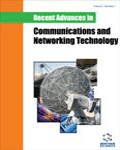Abstract
The theory of electrically coupled lines is applied as the rigorous method to the calculation of multi-conductor cables in order to determine the cause of the emergence of the electromagnetic interference (crosstalk) in communication channels and the common mode currents in the lines. The causes of the cable asymmetry, which leads to crosstalk, are shown to be the construction of each line as a twisted pair and the different distances between wire pairs of two adjacent long lines. The cause of emergence of the common mode is the asymmetry of excitation and loads. Calculation of capacitance between two wire elements in the presence of the third one permits to determine the equivalent lengths of a long line and monopole with unequal lengths of wires.
Keywords: Calculation of capacitance between two elements in the presence of the third one, Cause of asymmetry and crosstalk, Cause of common mode currents, Common mode current, Communication channel, Complex loading in the central radiator, Crosstalk, Different distances between wire pairs, Electromagnetic interference, Loads between wires and shield, Monopole of wires with different length, Multiple-wire radiator, Multi-radiator antenna, Open-end long line with different wire lengths, Reasons of changing wave impedance, Rigorous method of calculation, Stray capacitance of a transformer winding to ground, Twisting of each line, Wave impedance of a line inside a metal cylinder.




















